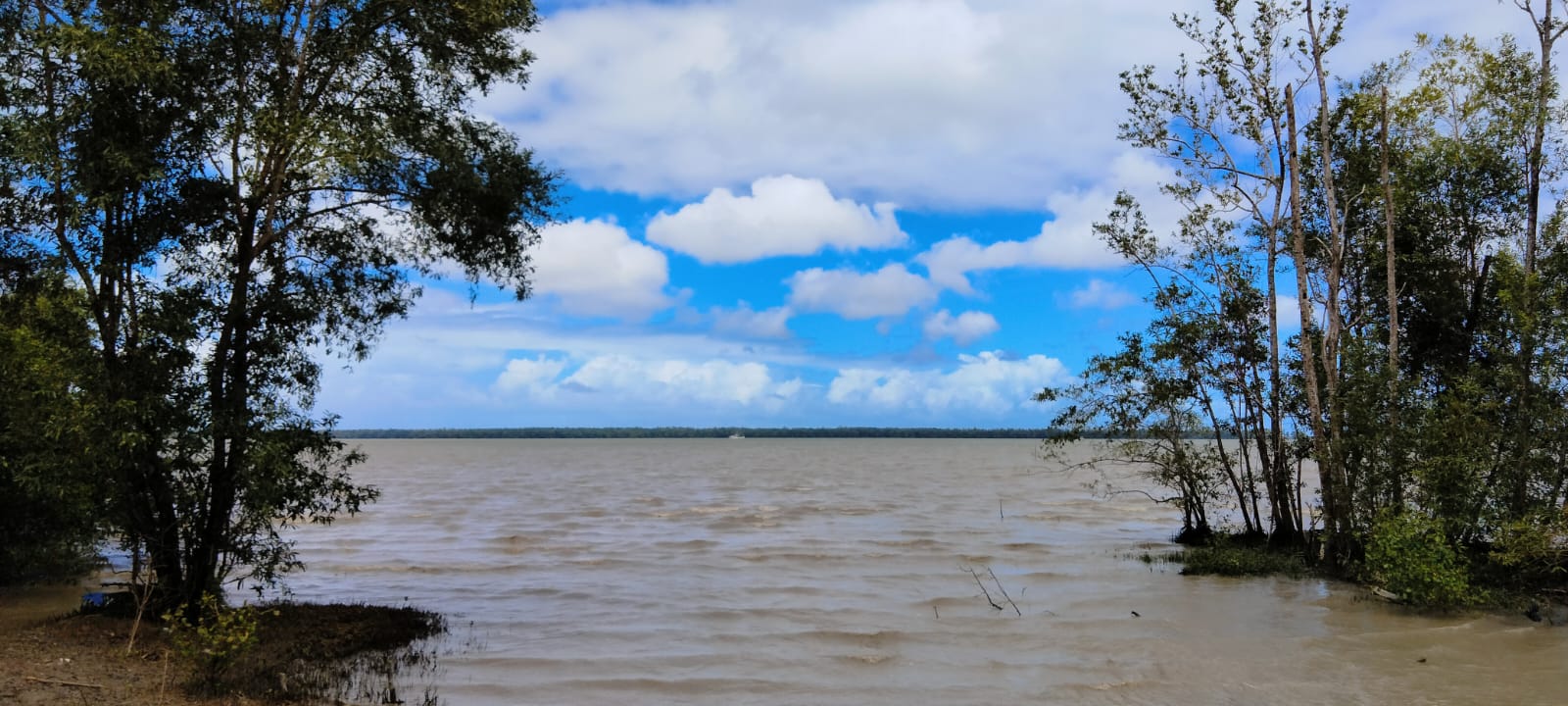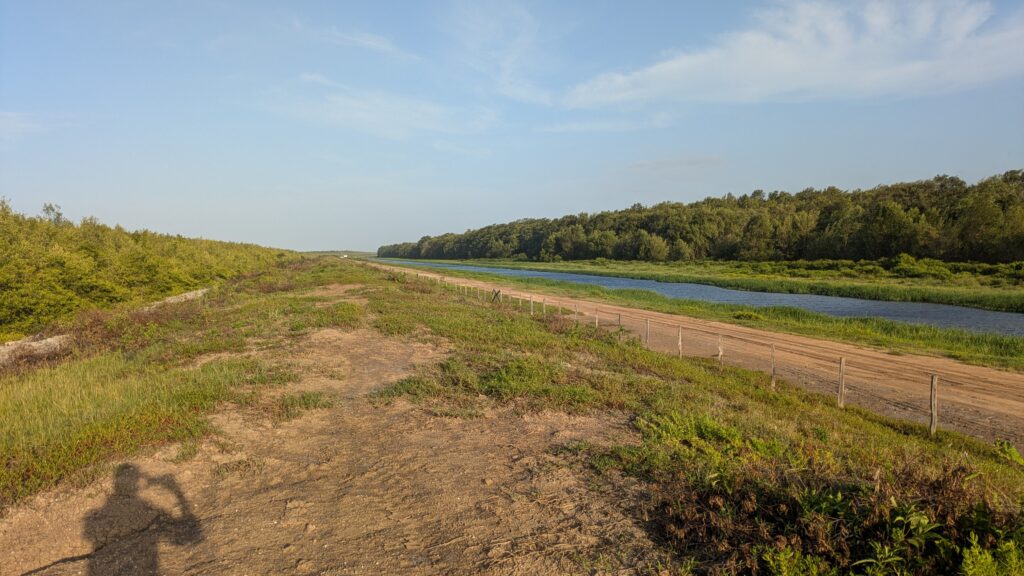Options and Actions
Many coastal protection strategies include hard-sea defences. For example, Georgetown, lying mostly below mean sea level, built a permanent concrete sea wall in 1860 in the Kingston area to protect the city, following several unsuccessful attempts using other methods1. Despite its success, the sea wall was recently raised by around a meter to prevent overtopping. Other areas are protected by an earthen dam, but breaches often occur2 .
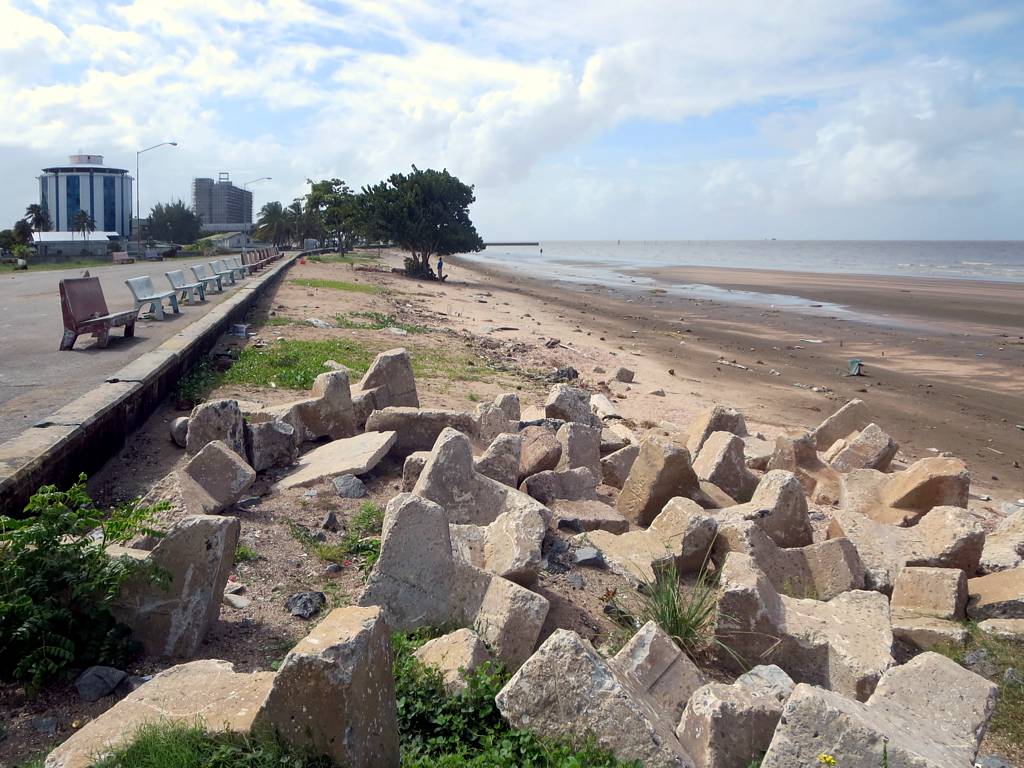
Rip-rap can be used along the shore or at right angles to it, to reinforce sea defences but such hard infrastructure methods are expensive3 and require costly and regular maintenance4 . The Government is now planning to spend USD 38 million more on a further 80 km of sea defence protection5.
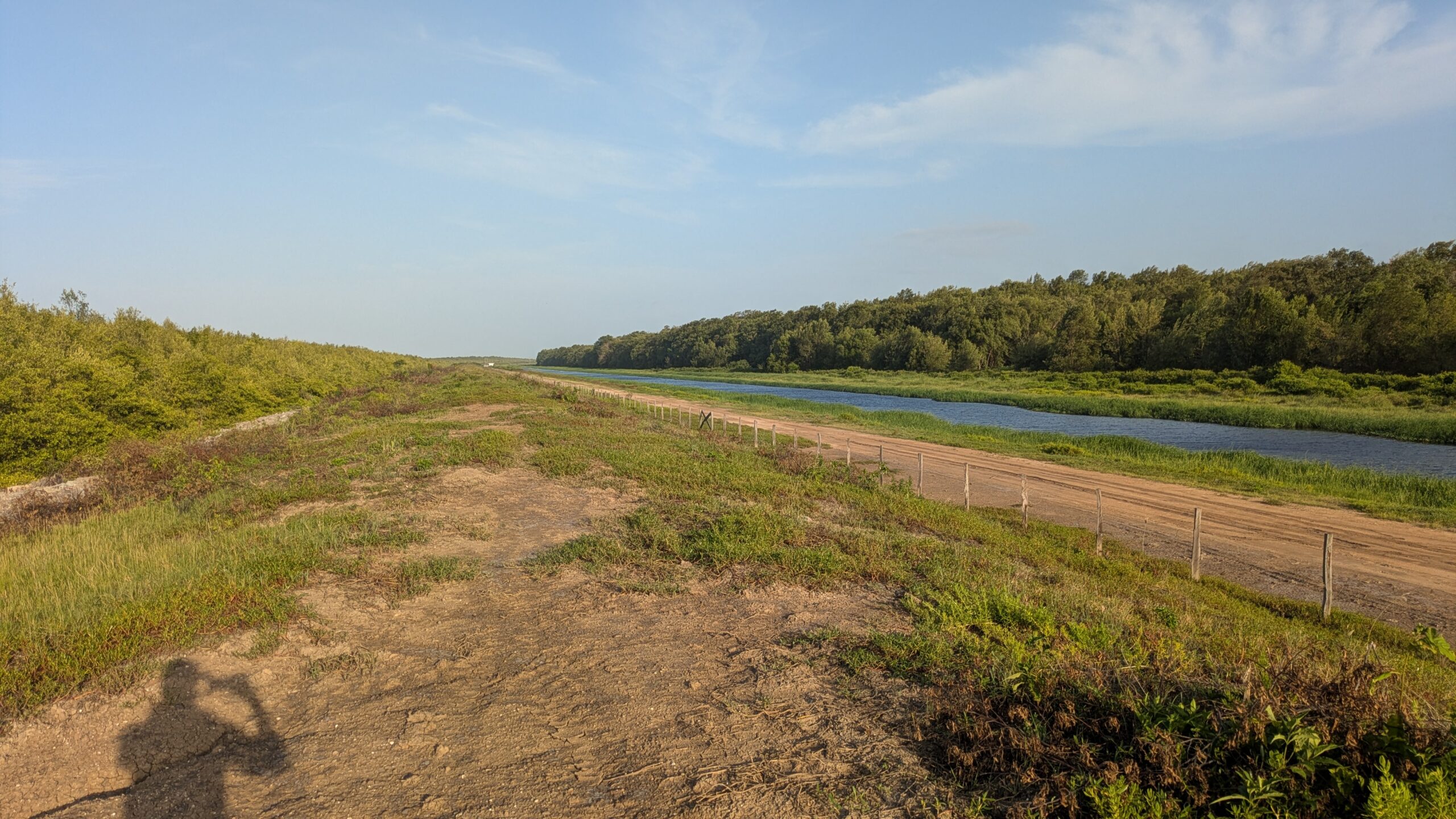
In Suriname, mangroves or earthen embankments protect the majority of the coastline. However, recently, a sea dike was constructed in the Coronie area of Suriname due to community demand. With frequent flooding, coastal communities are increasingly demanding hard structural defences, anticipating that these will provide the required flood protection.
Nevertheless, these engineered structures come at a price.
Besides requiring considerable financial resources to construct, the longevity of these efforts may be impacted by erosion linked to coastal mud-bank migrations and repeated storm surges. When flooding exceeds the capacity of the fortifications, hard coastal structures tends to trap encroaching floodwaters in the areas they were designed to protect, making repair and recovery difficult and degrading local agriculture and other economies.
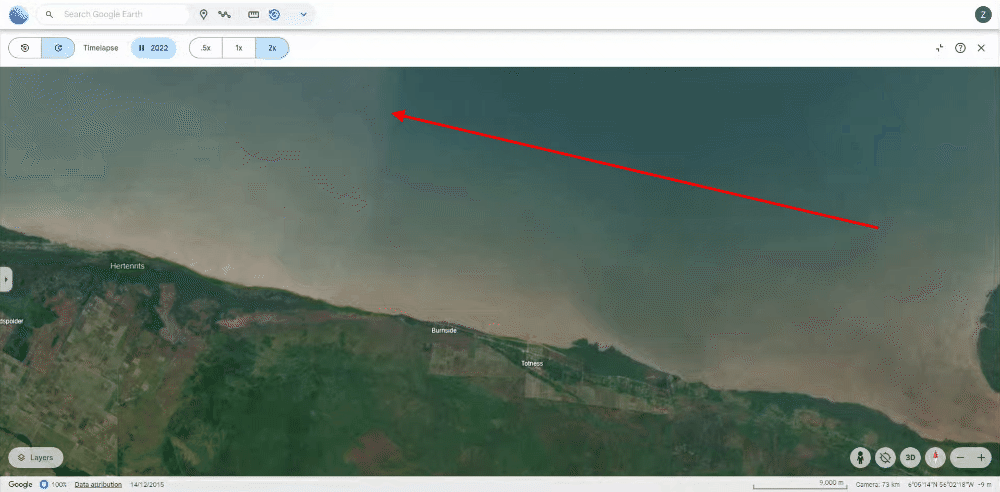
This timelapse from 1984 to 2022 shows the migration of mudbanks along the coast near Coronie, Suriname. As each mudbank migrates (the brown areas in the ocean along the coast), mangrove forest expands outwards frow where the mudbank was previously. The red arrow indicates the direction of mudbank migration.
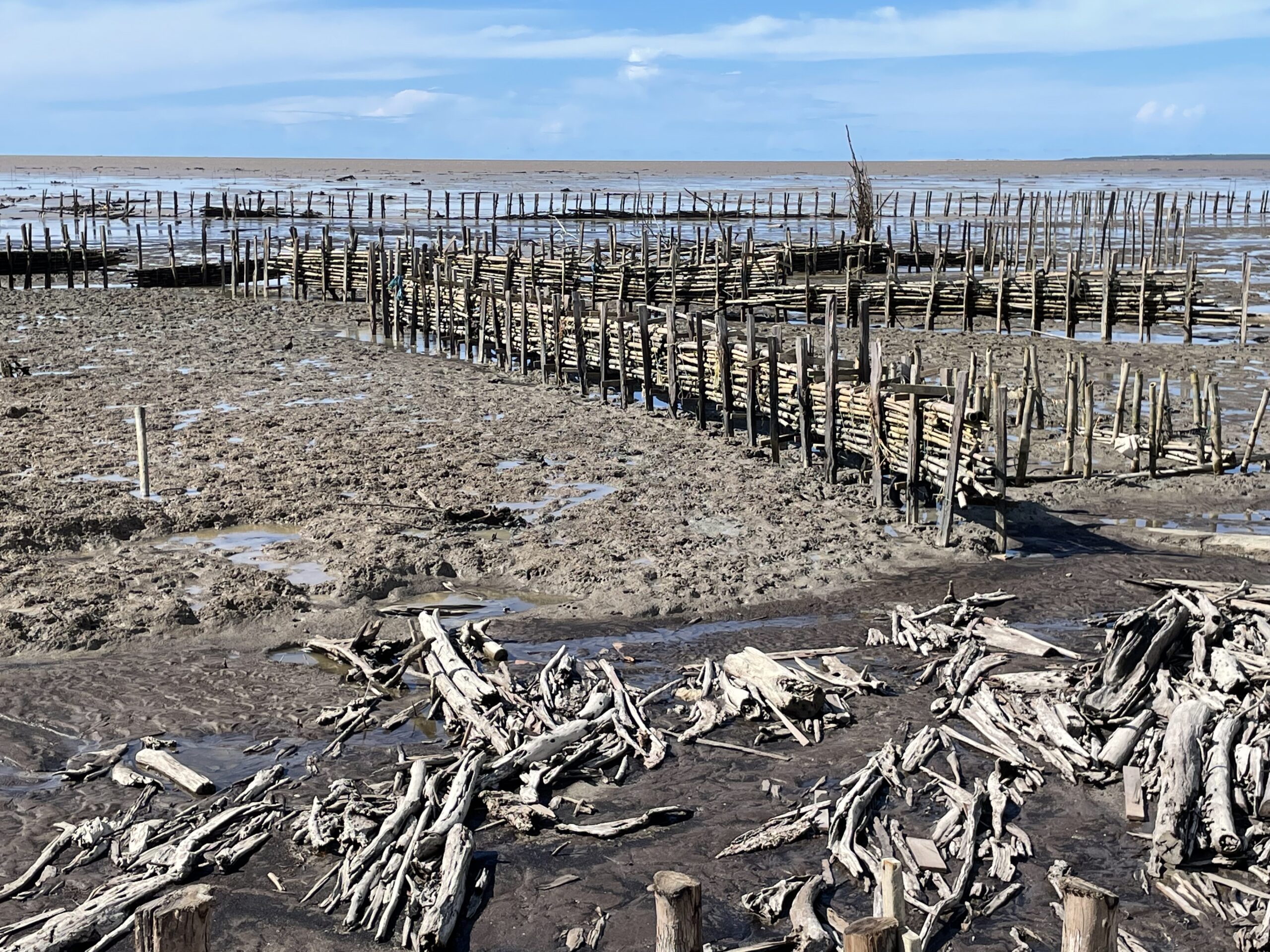
Mangrove forests, coupled with soft-shoreline infrastructure, like permeable barriers and sediment trapping mechanisms, offer a cost-effective and natural solution that can be used, also in addition to hard coastal protection structures, to protect coastlines.
It is well documented that sub-tidal mudbanks provide optimal conditions for the growth and spread of mangroves, but these mudbanks not only migrate based on regional coastal sediment dynamics but they also are vulnerable to changes in river outflow and dislocation or weakening of along-shore coastal currents. Large storms, especially when oriented perpendicular to the coastline, are likely to amplify erosion rates. These factors, although tied to large-scale global change beyond the control of coastal communities, contribute to the success or failure of coastal mangrove forests as a sustainable solution.
However, mangrove forests re-establishment is difficult in active areas of erosion, and takes time to establish. Mangrove re-establishment also requires particular hydrological conditions and stable sediment dynamics – but the Suriname and Guiana shorelines are extremely dynamic with rapid erosion and deposition cycles.
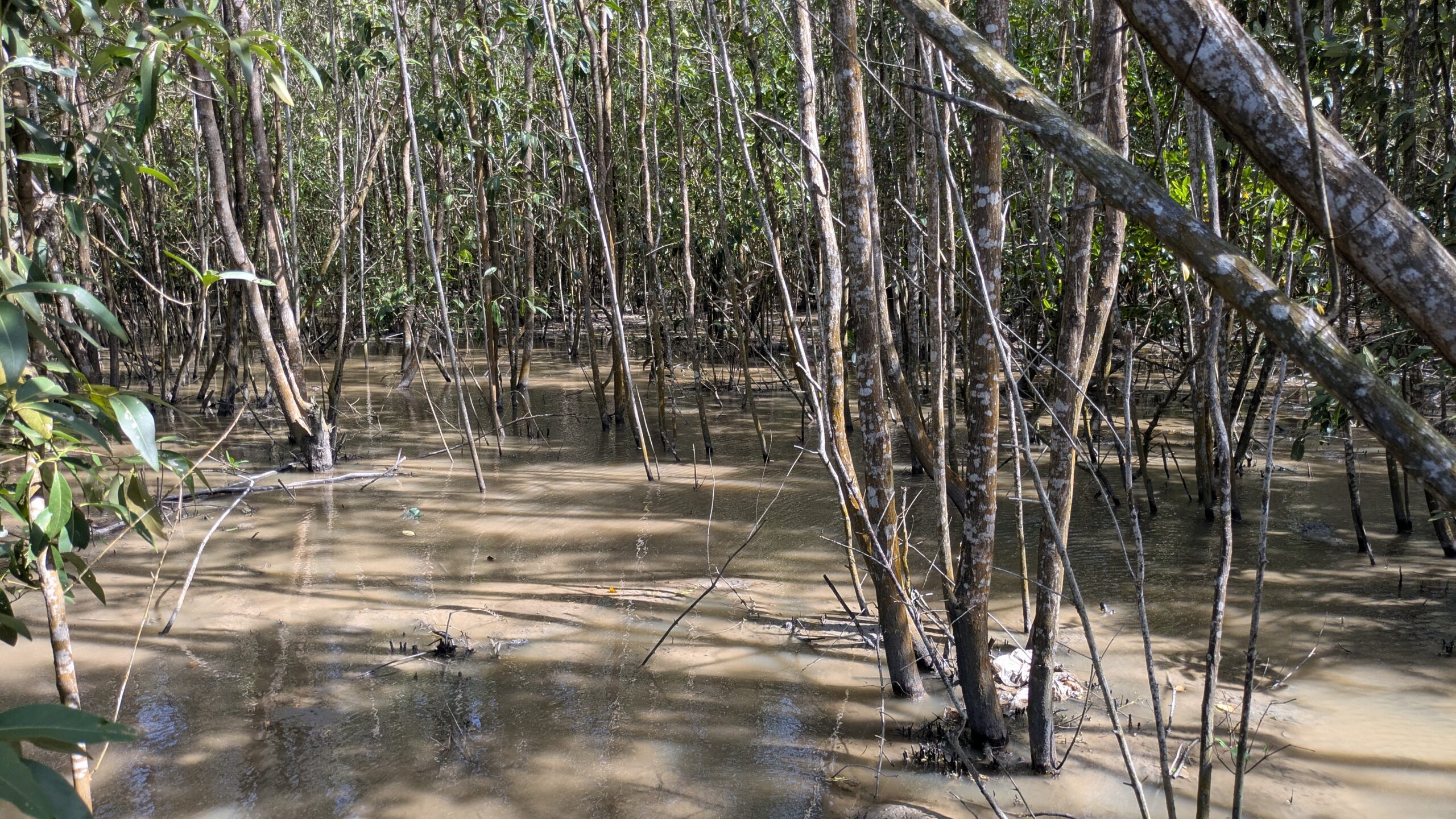
New scientific data and observations at the local level, paired with an understanding of the regional and global scale dynamics, can provide direct evidence on coastal environmental dynamics to inform decision-making but are currently lacking. Having a shared baseline of understanding and providing an equitable platform for discussion for all stakeholders is required to make better informed decisions when facing this complex challenge.
- https://ntg.gov.gy/monument/kingston-seawall/ ↩︎
- https://newsroom.gy/2023/03/22/millions-of-dollars-in-losses-for-grove-residents-after-sea-defence-breach/ ↩︎
- https://guyanachronicle.com/2021/12/09/226m-sea-defence-works-at-uitvlugt-completed/ ↩︎
- https://guyanachronicle.com/2020/08/11/works-at-mahaicony-sea-defence-breach-must-be-accelerated/ ↩︎
- https://guyanachronicle.com/2025/02/22/over-8000-metres-of-sea-defences-to-be-built-this-year/ ↩︎




